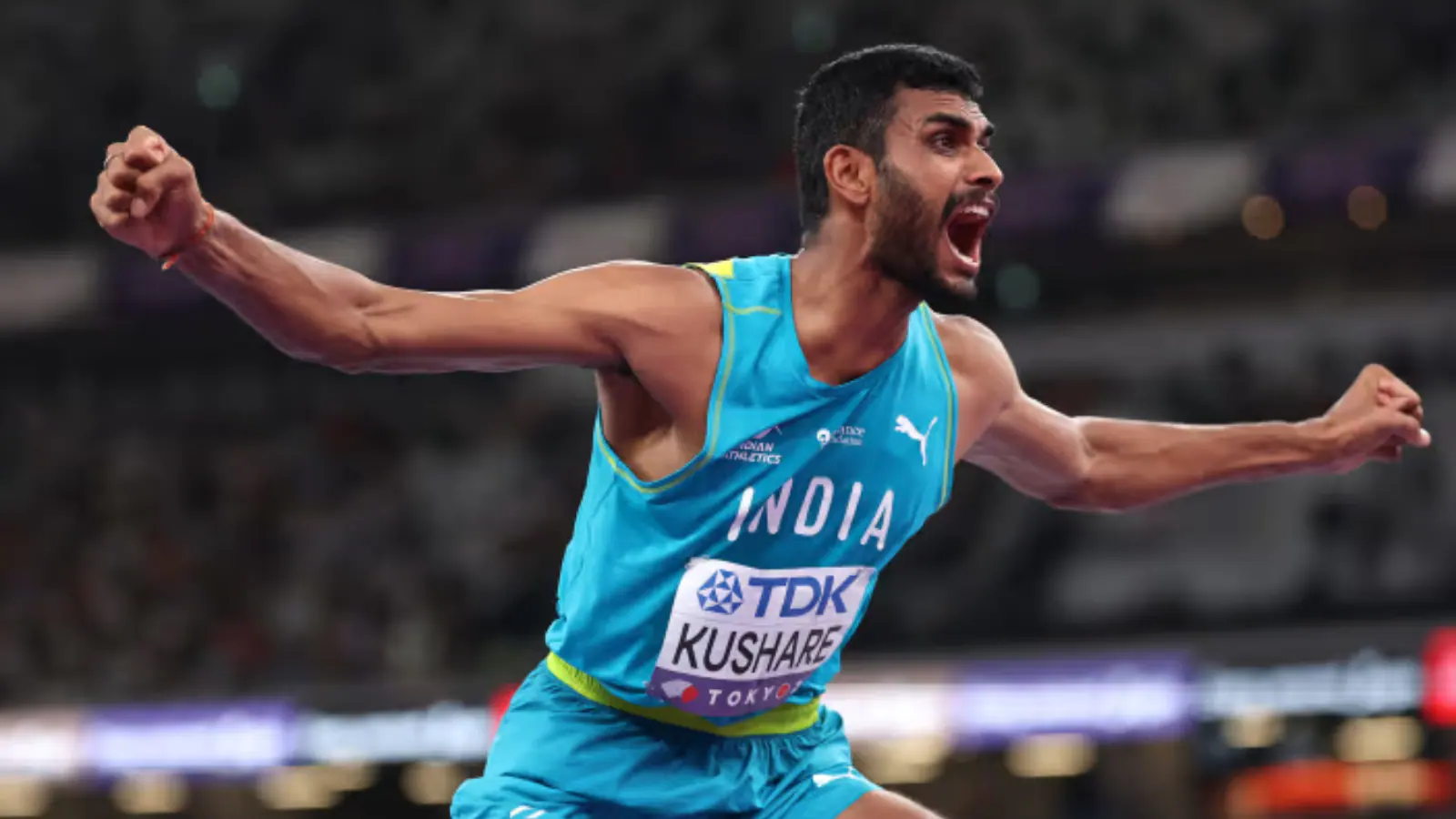By G Rajaraman,News18,Siddarth Sriram
Copyright news18

Sarvesh Anil Kushare found his own way to charge himself up to deliver a high-quality performance in the men’s High Jump at the World Athletics Championships at the brimming Japan National Stadium in Tokyo on Tuesday. He imagined being a warrior from an earlier era and came up with a personal best effort of 2.28m to finish sixth
At the introductions, he flaunted an imaginary sword and displayed a routine against an invisible opponent. “Each time, I tell myself that it is an opportunity to defend Sambhaji Maharaj’s throne,” he said, showcasing his roots and his respect for history from the 17th Century.
He did not make it to the podium, but he slayed some negativity in his own style.
With young Hurdler Tejas Shirse egging him on from the front row, Sarvesh Kushare cracked a code for the first time in three attempts in global competitions in successive years: after enduring ‘failures’ in the 2023 World Championships in Budapest, where 2.22m was not enough for him to get a place in the final, and Paris 2024 Olympic Games, where he peaked at 2.15m.
On Tuesday, he was not about to return without doing something memorable. He owed it not so much to his childhood coaches, RW Jadhav and Justin Thomas at the Army Sports Institute in Pune, but to himself. He was also not answering criticism that he had peaked. Instead, he was showing himself that small gains can be obtained with perseverance and patience.
It is not easy for athletes to ignore the chatter and stay focused on recording even marginal improvements that can bring them the rewards in terms of good positions in continental and global events. To lift oneself above the din and pursue evolution can be quite a challenge – and immensely satisfying when a goal is met, as Sarvesh Kushare found out on Tuesday.
When the bar was raised to 2.28, he was assured of a top 10 finish. But he was not about to be satisfied with that. He wanted to last deeper in the competition, soaking in the moment and drawing from a supportive crowd behind the High Jump area. He also wanted to cross that height and experience the challenge of unfamiliar territory.
More out of habit than necessity, he cleaned the take-off spot, diligently blowing off any dust with his towel. He was not taking any chances, but he had to rush his first attempt at 2.28 before the start of a women’s 400m semifinals race and also had to wait before his final jump at that height.
“We have to get used to the idea of being asked to stop because of a track event,” he said. “It does affect a jumper, especially when he has warmed up and is at the top of his run-up. Yet, if it is being done at the world level, they would have put some thought into letting track events take precedence over High Jump and Javelin Throw.”
On his way past the bar at 2.28m, his shoe made contact with metal, but the bar quivered and stayed in place. A weight off his shoulders, the Nashik-born sprinted towards the galleries to pose for the cameras, standing with his arms crossed and then clenching fists to bulge his biceps before letting out a heart-rending war cry: “Chhatrapati Shivaji Maharaj ki jai!”
He said he was aiming to give his 100 per cent and to register a personal best. “I wanted to raise the mark beyond 2.30 tonight itself. It has been many years since I managed a personal best in the 2022 National Games in Gandhinagar. I am confident I will get better in the time ahead,” he said, wiping sweat off his brow in the mixed zone.
The 30-year-old himself wants everyone to show some patience and understanding, even if an athlete is unable to deliver quality performances in one or two meets. “If all our athletes are supported, I am confident there will be more medals besides the ones won by Neeraj bhai,” he said.
He competed at every available opportunity in India this year. The wins in the eight domestic competitions were punctuated by a trip to Gumi, South Korea, for the Asian Athletics Championships. His plea for more international competition has its basis in reason and logic, more so with only J Adarsh Ram passing the 2.20m mark this season.
“Travelling to international competitions is very critical, irrespective of the outcomes. Neeraj’s presence alone is inspiring. He does not need to utter a word. But the more time we spend together, we will keep getting better,” he said, making a case for several athletes who train relentlessly in search of marginal improvements.
“I did only 2.15 at the Olympic Games, but the lessons from that experience were handy. I could have won a medal in the Asian Championships in Gumi, but did not clear 2.23 and finished fifth. It was not the result I had wanted, but I had to accept that on the given day, my body was not responding. The more we compete in international events, the better it will get for us.
Indeed, Sarvesh Kushare offered a counterpoint to those who dismiss athletes in measurable sport because they have not shown improvement for a while and decide to alter the quantum of support. “As an athlete, all I can do is stay motivated, look for incremental improvements in every facet of my specialisation and be prepared,” he said.
The genial jumper has promised to continue his endless quest for small gains in a discipline in which every additional centimetre poses additional challenges to the body and the mind. Truth to tell, Sarvesh Anil Kushare has emerged as a veritable, even if simple, personification of the art of chasing marginal improvements
In keeping with Sarvesh Kushare’s warrior approach, his friend Tejaswin Shankar showed no hesitation in taking to the microblogging site X and coronating Sarvesh Kushare as the greatest Indian high jumper. Of course, as the National Record holder, Tejaswin Shankar knows what he is talking about.



